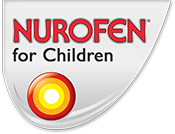Cold and Flu Remedies: The Right Tool for the Job

What is the difference between a cold and flu?
Your child is suffering from a runny nose and complains of a headache. You suspect a common cold – but what if it’s the flu? You may have heard the phrase ‘Flu is just a heavy cold’ and it's certainly true. So, what is the difference? And should they be treated in the same way?
Both colds and flu are the result of a virus infecting your body. The key difference between cold and flu however, is down to the actual virus that causes the illness. Some viruses cause colds, while other viruses cause , and it is the difference between these viruses that result in different symptoms encountered in both illnesses. There are about 200 viruses that can cause colds, but just three that cause flu. So whilst cold and flu symptoms can be similar, it is important to look out for the differences:
Cold:
Likely -
- Runny nose - involving clear mucus initially and thicker, green mucus later on
- Blocked nose
- Sore throat
- Sneezing
- Cough
Possible -
- Fever, tiredness, muscle aches
- A headache
Flu:
Likely -
- A sudden onset of fever - your body temperature increases to 30-40⁰C (100-104⁰F)
- Muscle aches and pains
- Sweating
- You feel extremely tired, exhausted, and feel you need to lie down
- Cough - a dry chesty cough
- Sore throat
Possible -
- Runny nose, sneezing
- A headache
How to combat colds and flu
Painkillers such as paracetamol and ibuprofen can help to relieve aches and pains, however, Nurofen Cold & Flu* contains not just ibuprofen, but a decongestant too, called pseudoephedrine hydrochloride. In fact, there’s nothing stronger for your cold and flu pain and congestion than Nurofen Cold & . Strong and long lasting, and getting to work fast, it works to alleviate your symptoms, and to get you back to normal as quickly as possible. It is useful for children older than 12 years of age as well.
Aside from treating your symptoms with medication, there are other things you can do to help speed up your recovery, such as resting adequately, keeping warm, and staying hydrated.
How Nurofen Cold & Flu works
As we have seen already, Nurofen Cold & Flu contains two ingredients, ibuprofen and .
Ibuprofen - to help treat inflammation, pain and fever
Ibuprofen works by blocking the production of some chemicals in the body called prostaglandins - their release can lead to pain, fever and headaches. But prostaglandins can also make tissues inflamed and swollen. They are one of the reasons why your throat may swell up when you are sick and your nose gets blocked when you have a cold or flu.
Pseudoephedrine - to help treat associated congestion
None of the symptoms of a cold or flu are pleasant. But the need to keep blowing your nose can be annoying and inconvenient and your breathing may also be affected. So, this is where the pseudoephedrine ingredient in Nurofen Cold & Flu can help. That is because pseudoephedrine is a decongestant and it helps to relieve cold or flu associated nasal and sinus congestion (blocked or runny nose), which in turn helps to ease breathing.
If you are in any doubt about the way you or your child are feeling, you should seek professional help. However, for a cold or flu, consider visiting your local pharmacy for Nurofen Cold & Flu. It provides powerful, fast, effective relief from the major symptoms associated with colds, flu and congestion – all without causing drowsiness.
* For adults and children over 12 years. Product may not be suitable for some people, see pack leaflet or ask your doctor or pharmacist for details
Information presented is not meant to diagnose an ailment or prescribe a cure. In all health matters please contact your doctor. Nurofen Cold and Flu contains ibuprofen and pseudoephedrine. For cold and flu relief. Always read the label.
